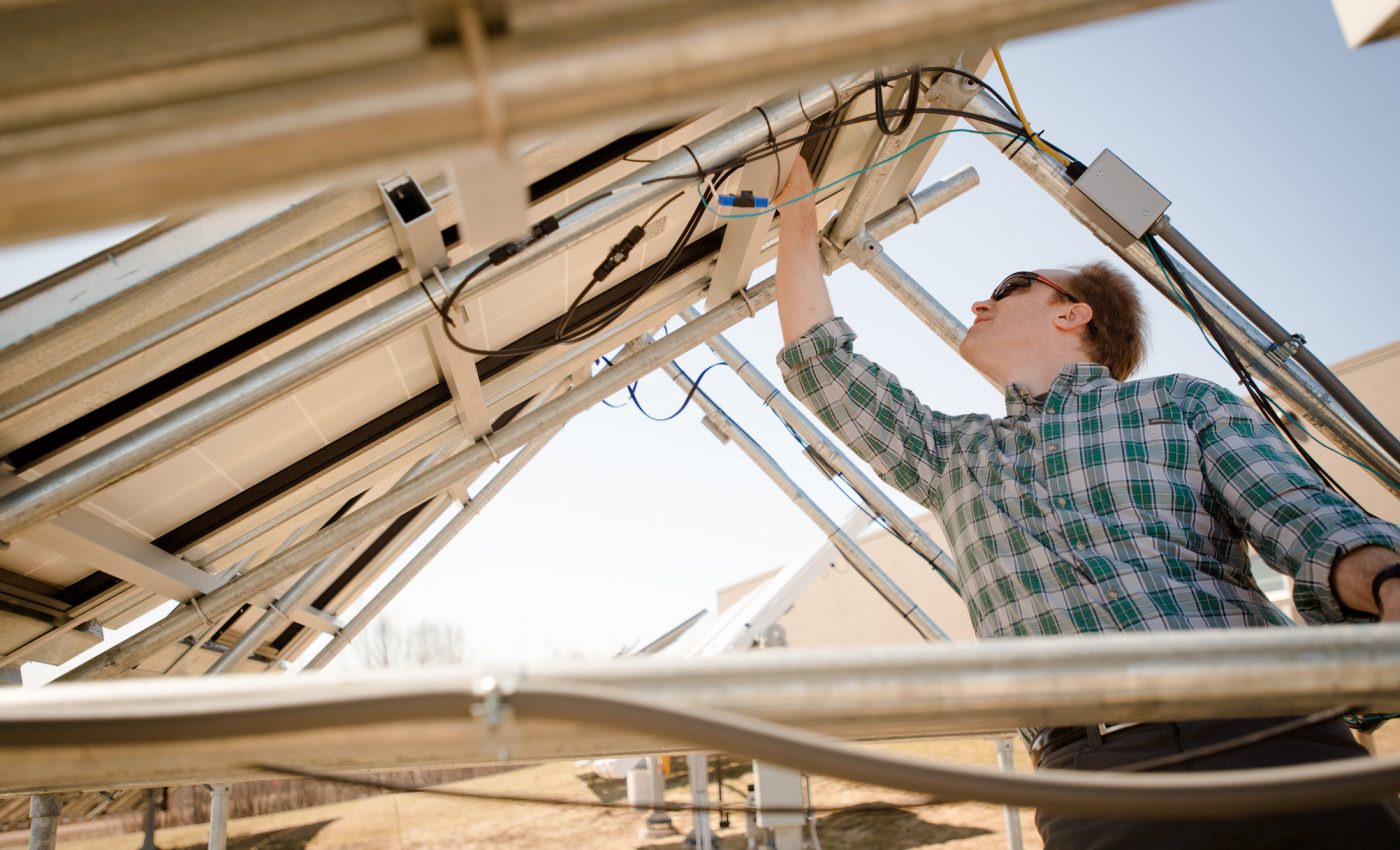
Solar energy use is on the rise as costs continue to drop
Researchers at Michigan Technological University have found that changing the type of silicon used in solar cells can reduce production costs by more than 10 percent.
Joshua Pearce is a professor of Material Sciences and Electrical Engineering and a co-author of the study. He explained that solar energy is the fastest growing energy source and that costs are already comparable to conventional forms of electricity. An additional ten-percent drop could drive this progression even more.
“Improving cost per unit power at the cell level can have massive effects downstream,” said Professor Pearce.
Silicon is the standard material used in solar photovoltaic (PV) cells to capture light, and comes in two main forms. Perfect silicon crystals cost more and produce higher efficiencies, while multicrystalline silicon costs less but produces lower efficiencies.
Prior research demonstrated that nano-texturing silicon with dry etching makes black silicon (black-Si) that is more efficient at capturing light than standard etching treatments.
“Those needles grab the light and don’t let it get away. It’s like looking into the eyes of Darth Vader,” said Professor Pearce.
In addition, scientists at Aalto University discovered in a previous study that when black-Si is treated with an appropriate atomic layer deposition (ALD) coating, the surface defects that could hurt electrical performance are mitigated.
It has been commonly assumed that the cost of black-Si cells from dry etching and ALD are too expensive for practical use. Professor Pearce said that, in this industry, “margins are extremely tight” and there is a push for the lowest costs possible.
The results of the current study, however, came as a surprise. While the production of individual black-Si passive emitter rear cells (PERC) were found to be between 15.8 and 25.1 percent more expensive compared to the production of conventional cells, the efficiency gains combined with the use of the less-expensive multicrystalline silicon actually outweighed those extra costs. Overall, the cost per unit power dropped by 10.8 percent.
“For the people that think coal technology is going to be able to compete with solar, they should know solar costs are still coming down,” said Professor Pearce. “Most coal companies are already, or near, bankrupt now. There’s no way coal’s going to be able to compete with solar in the future.”
“This study points to where the future is going to go in PV manufacturing and what countries might want to do to give themselves a competitive advantage.”
The research is published in the journal Energies.
—
By Chrissy Sexton, Earth.com Staff Writer
Image Credit: Sarah Bird, Michigan Tech













